Zürichstrasse 49
| Beat Weinmann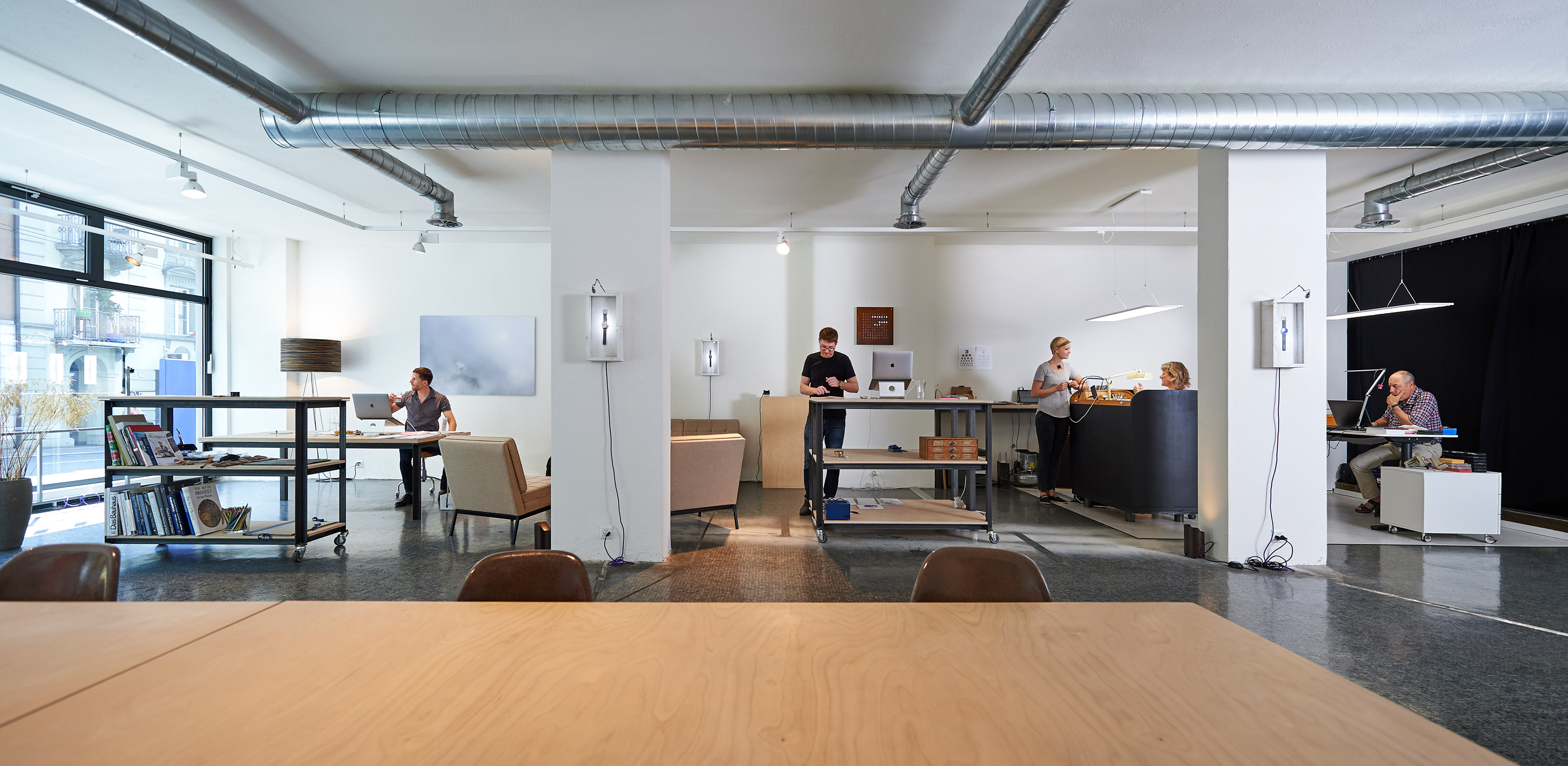
Zürichstrasse 49 in Lucerne, Switzerland – we arrive here almost daily and often spend most of our time here. And we’ve done so for the past six years. So it is high time for me to look at this wonderful place with fresh eyes and to describe pictures of spots and objects in this room as captured by the camera and through the eyes of Bea Weinmann, in collaboration with Cail Pearce.
In the past six years, this rectangular room, measuring 180 square meters, has changed a lot. The customized, modular, and movable furniture is still here though. The kitchen is, too – even though we had to replace the espresso machine in 2014. In the beginning, the space might have been a “slightly too hip” concept store. We sold watches by Ludwig Oechslin and also selected, usually handmade, products. In this phase, our watches were not assembled in-house, but by our partner Marion Müller, and Ludwig Oechslin was still the director of the Musée international d’horlogerie in La Chaux-de-Fonds. But with time came the realization that, though a concept store in Berlin or New York is a stylishly furnished place with carefully curated objects, these objects can also be purchased elsewhere, in a different environment. And with that insight, I came to truly appreciate how unique the constructions developed by Ludwig Oechslin and the possibility to have these built to measure, are. ochs und junior watches can only be purchased here in Lucerne, directly from our workshop. Equipped with that knowledge, we work in this creatively charged room and enjoy the high functionality of a – intentionally no longer curated – place. Yet, there are still objects here that might otherwise be found in a museum …
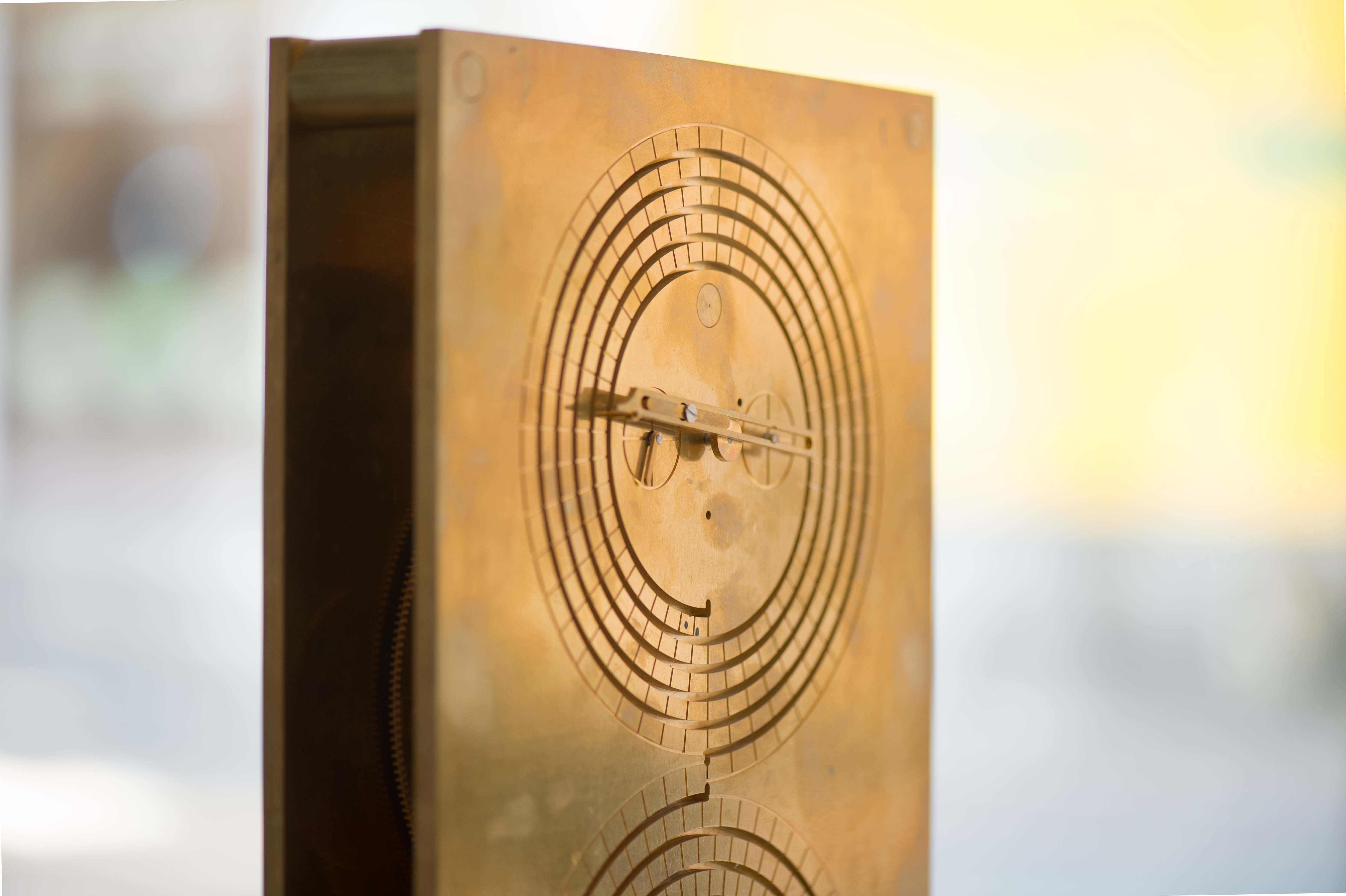
For example, the Antikythera mechanism – you can read more about it in this thought post. This object illustrates how Ludwig Oechslin works with materials, how in his pieces, crudeness meets sophistication, and how metals acquires a patina through environmental conditions and touch.
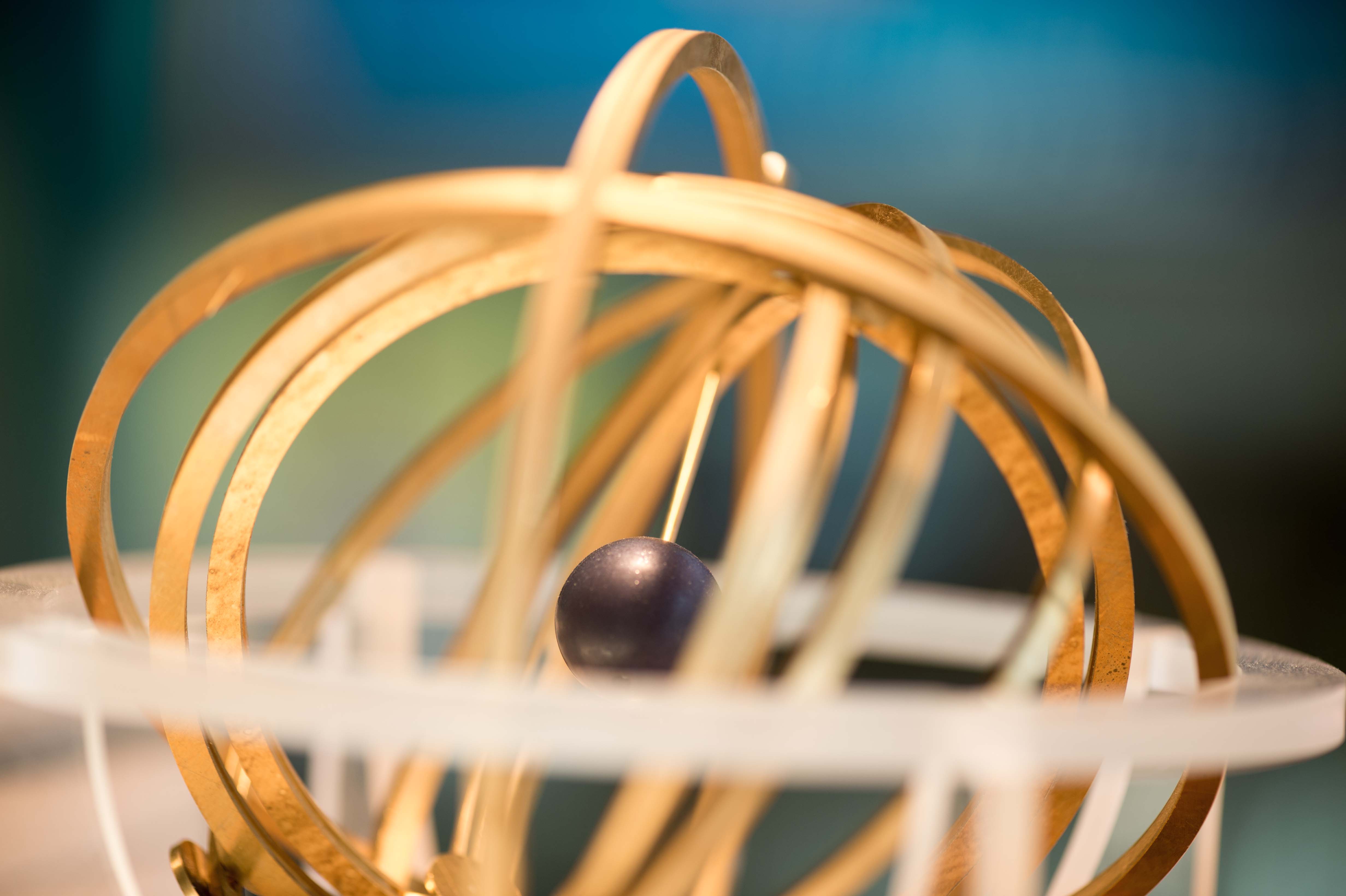
This small and fully functional marvel is Ludwig Oechslin’s interpretation of a Korean armillary sphere. Through a sophisticated mechanism developed by Oechslin, it shows the changing movements of the sun and the moon in relation to the earth.
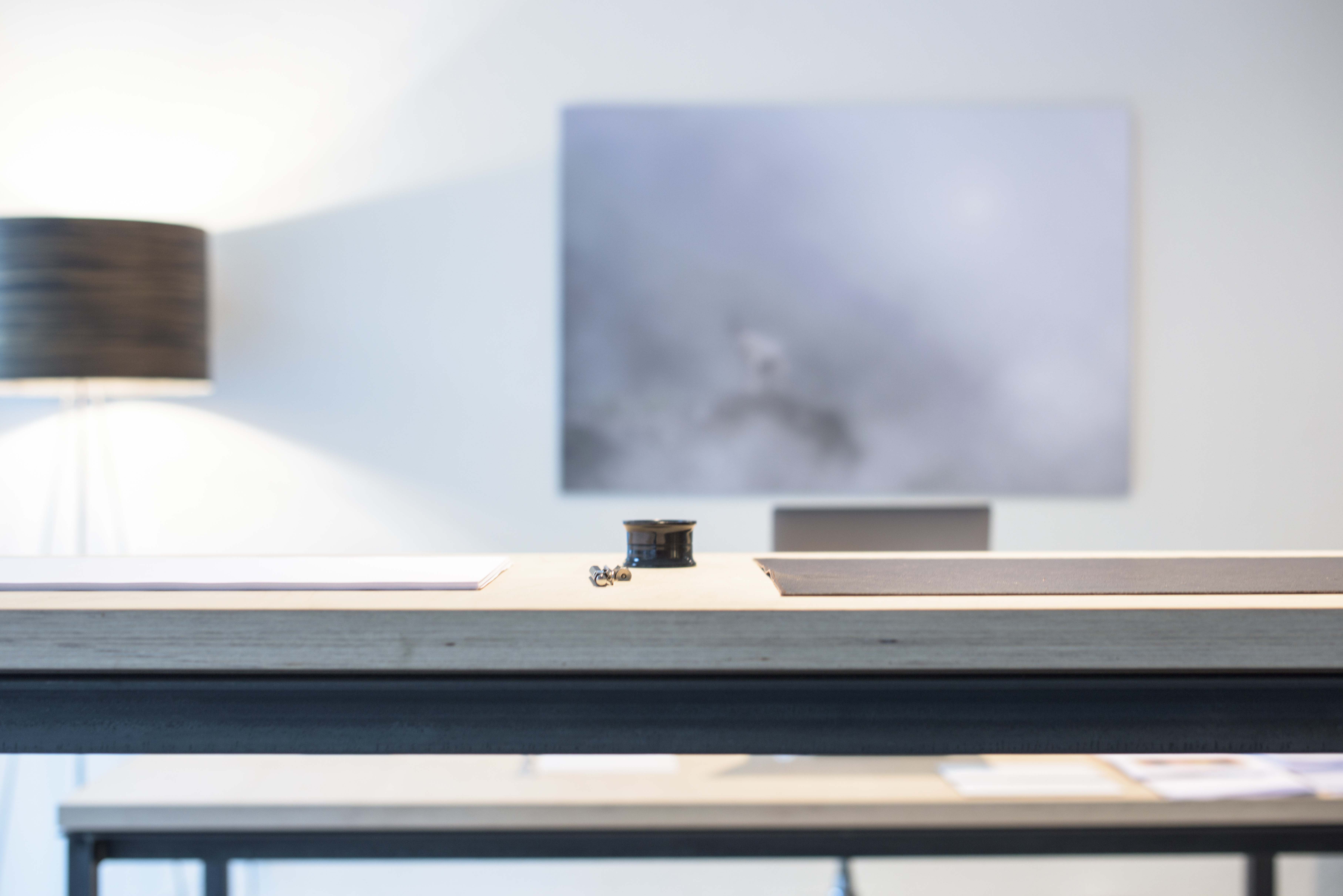
This is one of my favorite spots in our workshop at Zürichstrasse. It’s where we present our watches, laying them out on dark brown Ecopell leather, show single parts, or explain mechanical processes. It’s often the place where we lay the base for discussions on the long table, where we talk about the details of the just ordered ochs und junior. Right behind the standing desk is my neat workplace with my Macbook, the telephone, and the usually well ordered, ready to be processed documents. And my workplace is always watched – by the curious goat photographed on Mount Rigi.
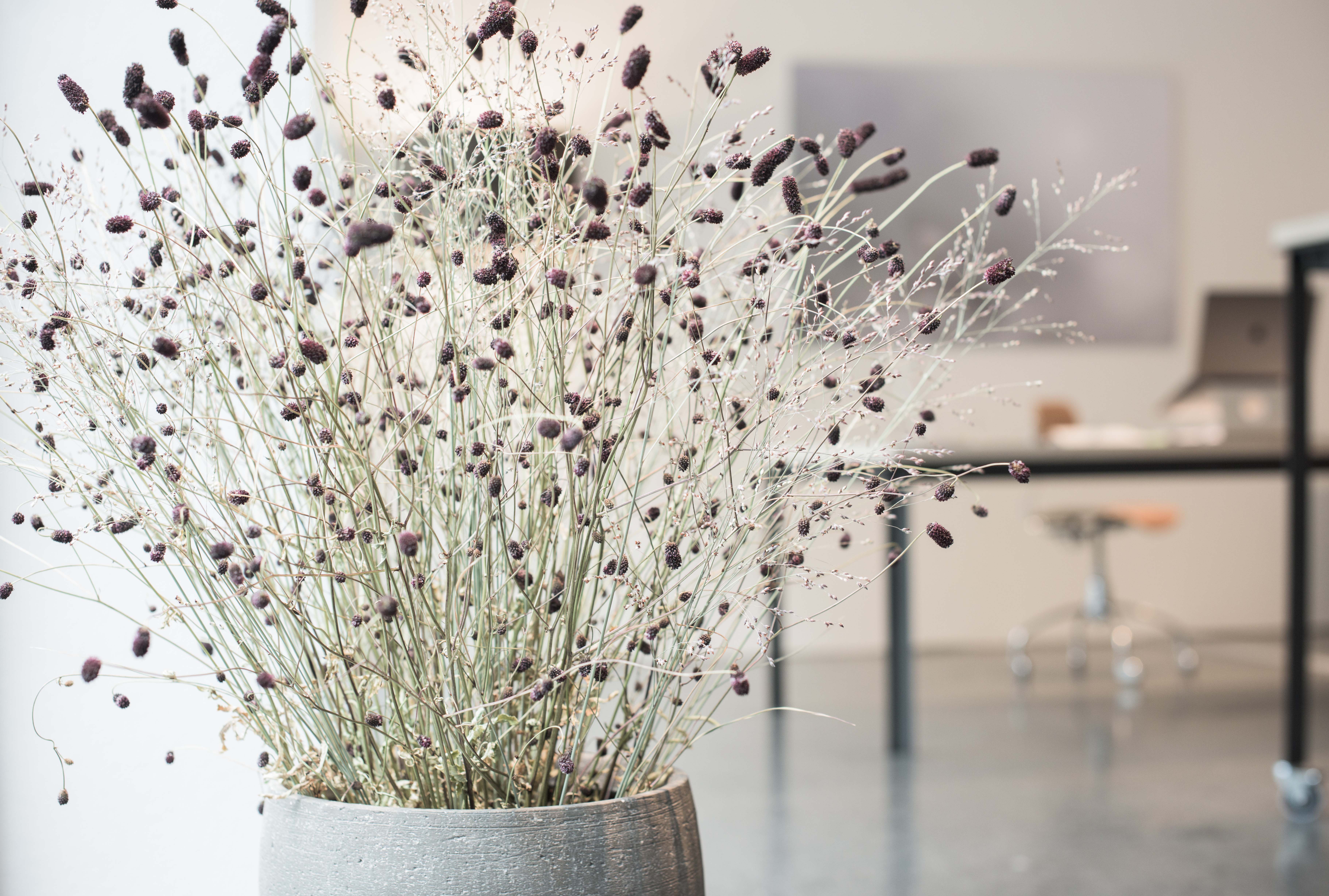
Our workshop may appear a little plain – though we think it’s stylish – which is why Sandra Fahrni brings us flowers every Wednesday. Oftentimes she brings fresh flowers, occasionally even a little pompous ones to contrast the industrial atmosphere, but sometimes she delivers dried leaves and blossoms instead. Some of the people that stop outside our display windows have no idea what we are doing – they just admire the flowers…
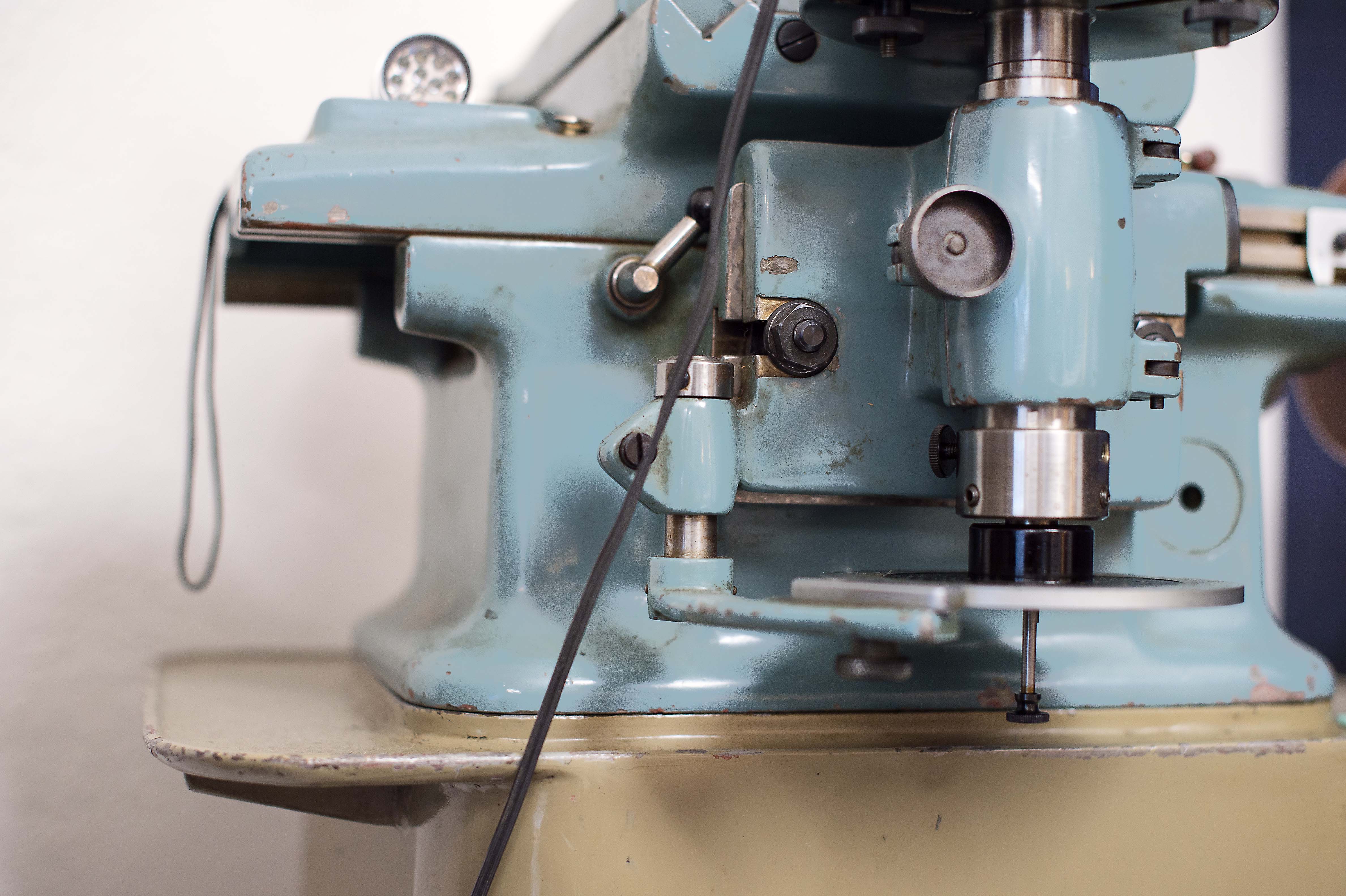
Dove grey, very, very heavy, and entirely unsuited for use in today’s watch industry. However, we don’t produce on an industrial scale. And for a manufacturer of individual pieces and small series like we are, this optical high-precision measuring device from the 1950s is perfect. It allows us to detect possible irregularities in the manufactured parts and to examine each part individually – with a precision of 1/1000mm.
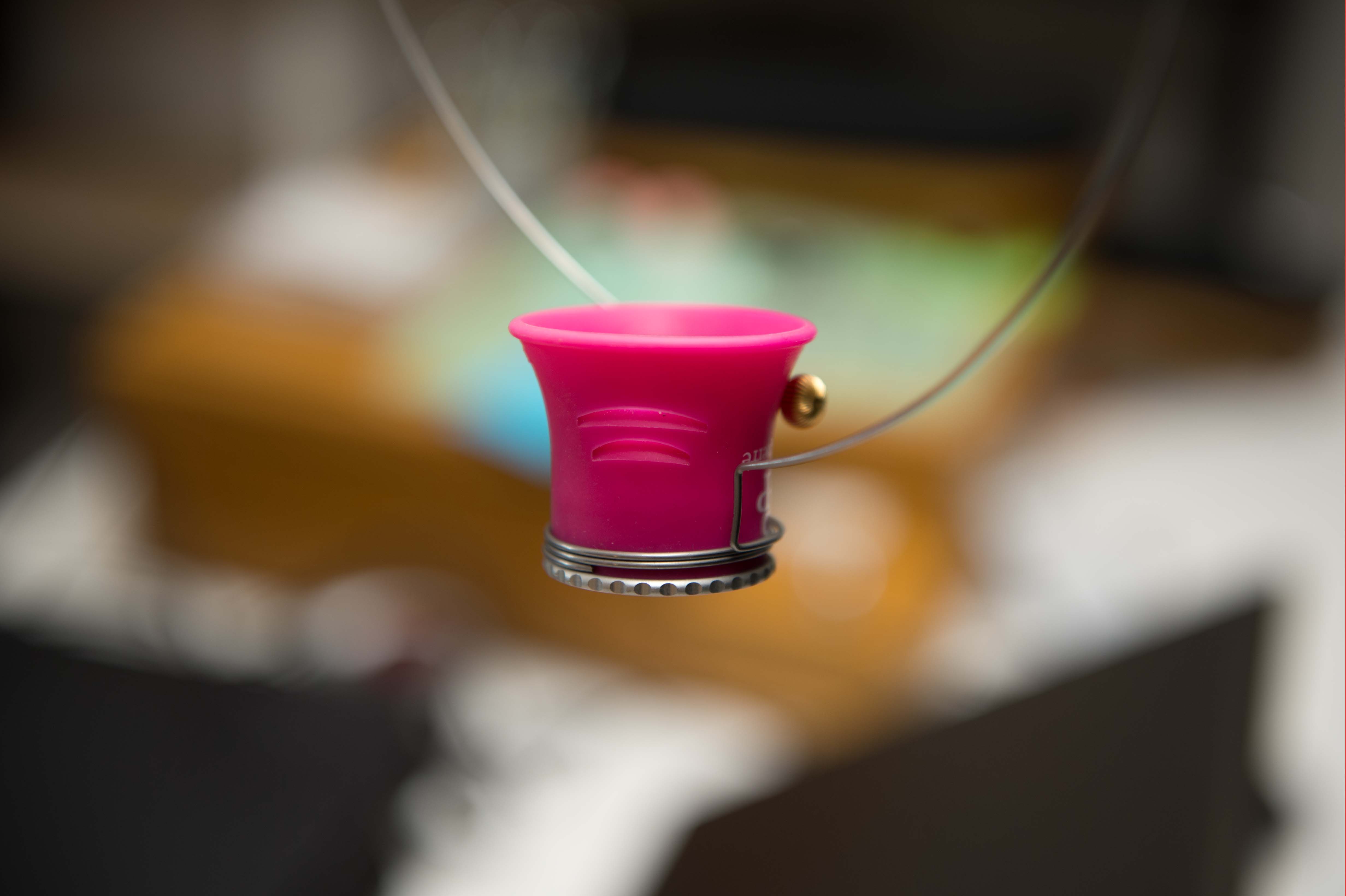
No idea why this loupe is pink. Though perhaps it is precisely this exotic color that moved Ludwig Oechslin to declare it his official ochs und junior watchmaker’s lens.
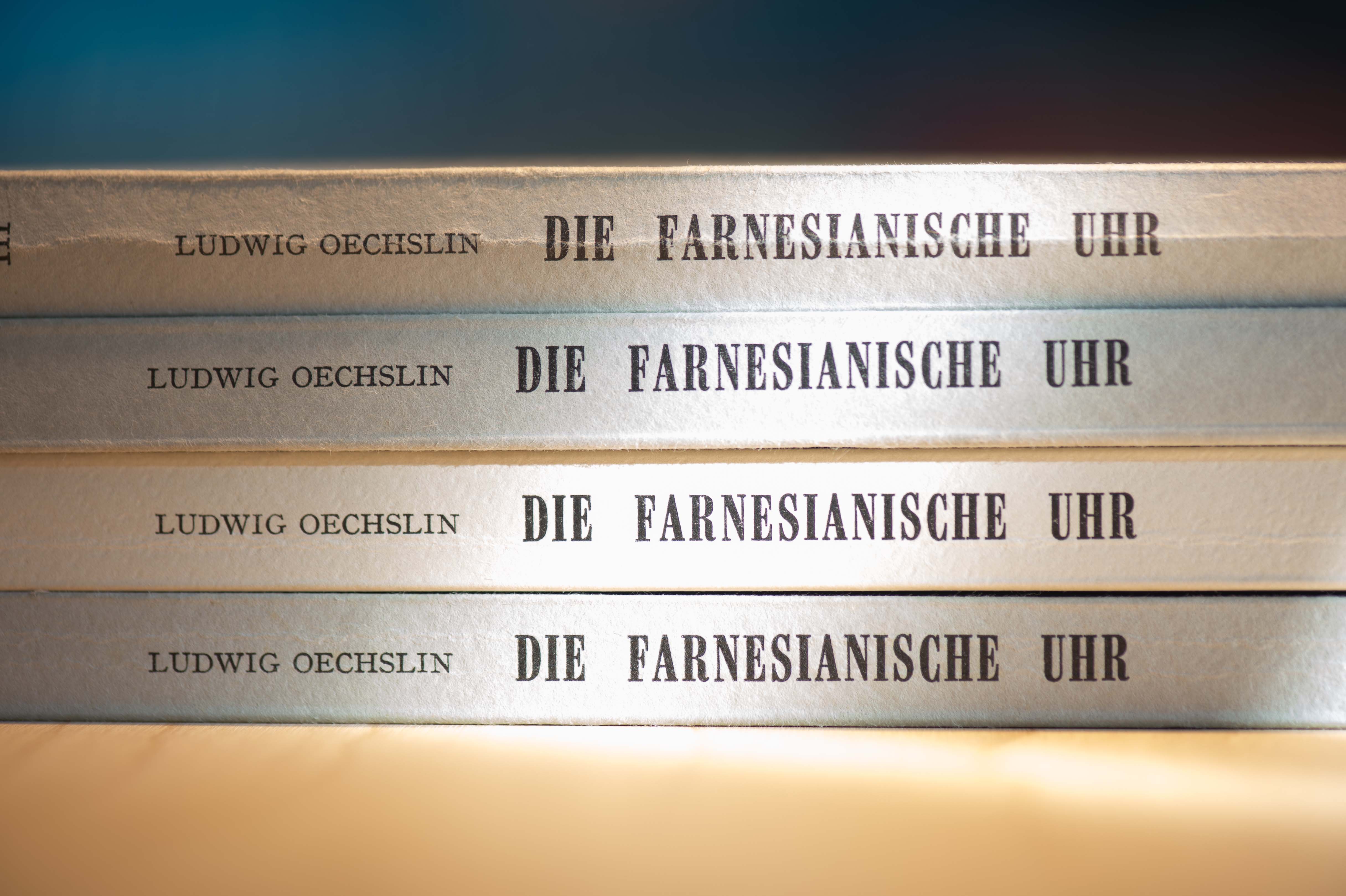
This scientific documentation of the Farnese Clock has been printed in the Vatican in Rome. Ludwig Oechslin restored the important astronomical clock from the early 18th century in the Vatican between 1978 and 1982. He not only preserved and documented the monumental clock, but – to his own surprise – got it working again. The Farnese Clock served Ludwig Oechslin as basic inspiration to use gears in his constructions.
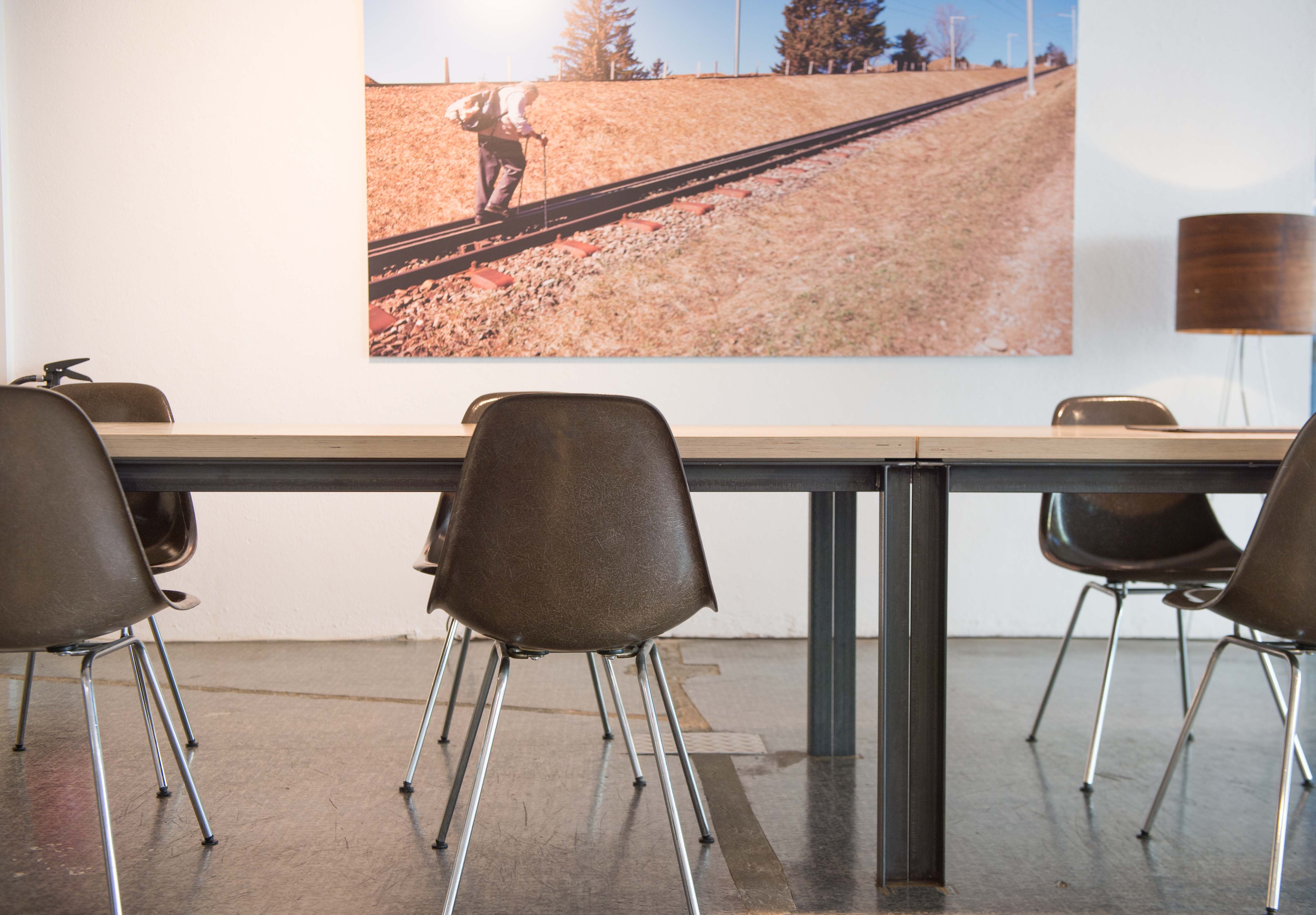
Four meters long, made of birch-wood veneer and crude iron. Combined with the fiberglass Eames chairs manufactured by Herman Miller. This table is where you’ll drink your espresso, observe what is happening in our workshop, discuss the details of your personal ochs und junior with me, and receive your finished watch. Of course, it’s also the place where we hold our strategy meetings or occasionally eat a plate of spaghetti.
Ideally, you’ll arrange for a meeting beforehand. If you stop by spontaneously or unannounced, it’s possible that there will already be someone else sitting at that table and requesting a consultation. In this case, simply join us – many good discussions have arisen from such chance meetings of interesting people.
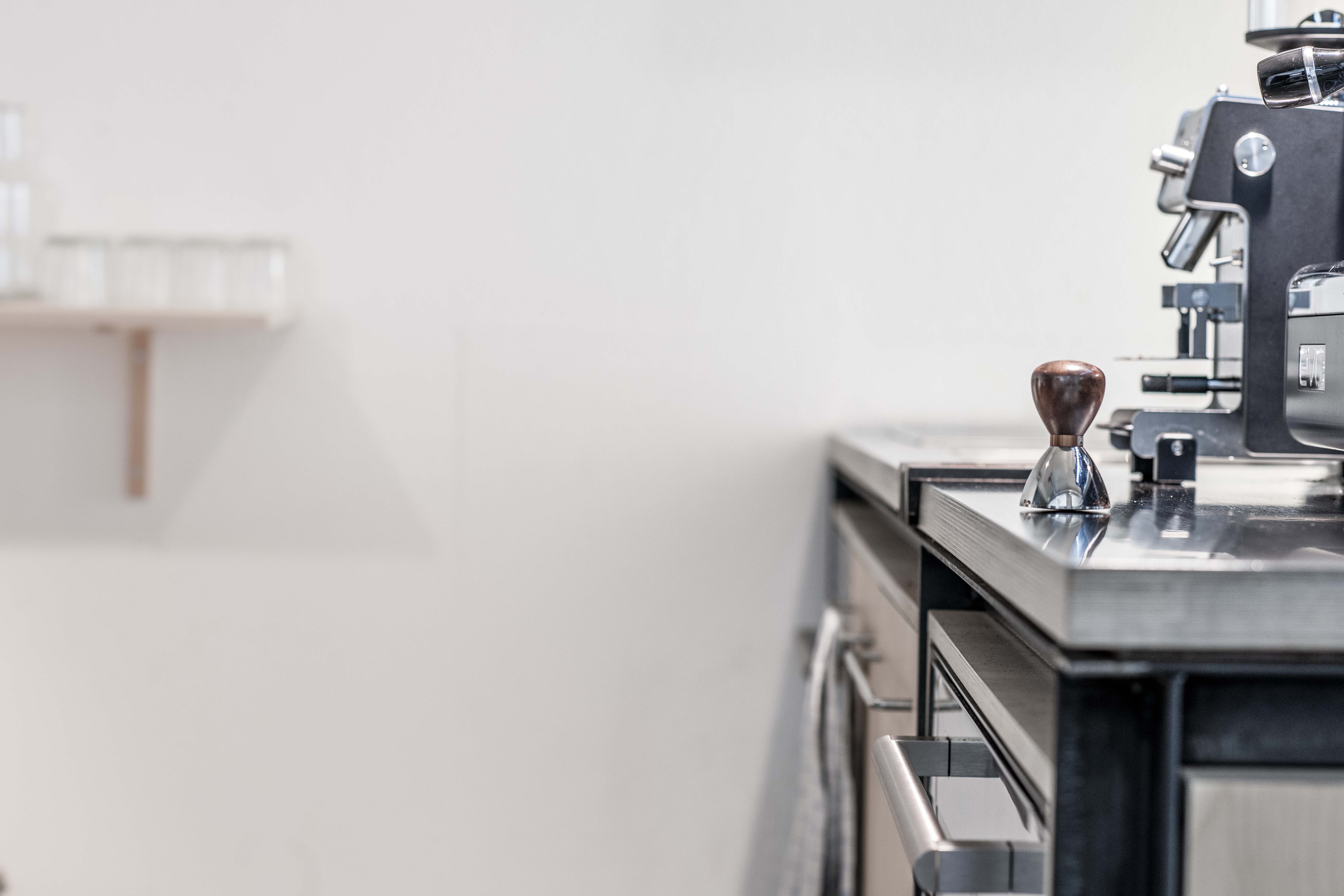
Could this be the central node of our workrooms? Think about it. Where do the best discussions take place when one is visiting friends? Usually in the kitchen. The same is oftentimes true for ochs und junior, especially when an ambitious espresso supplies material for discussion, provides the impulse for a short break, or enlivens the talks with a guest.
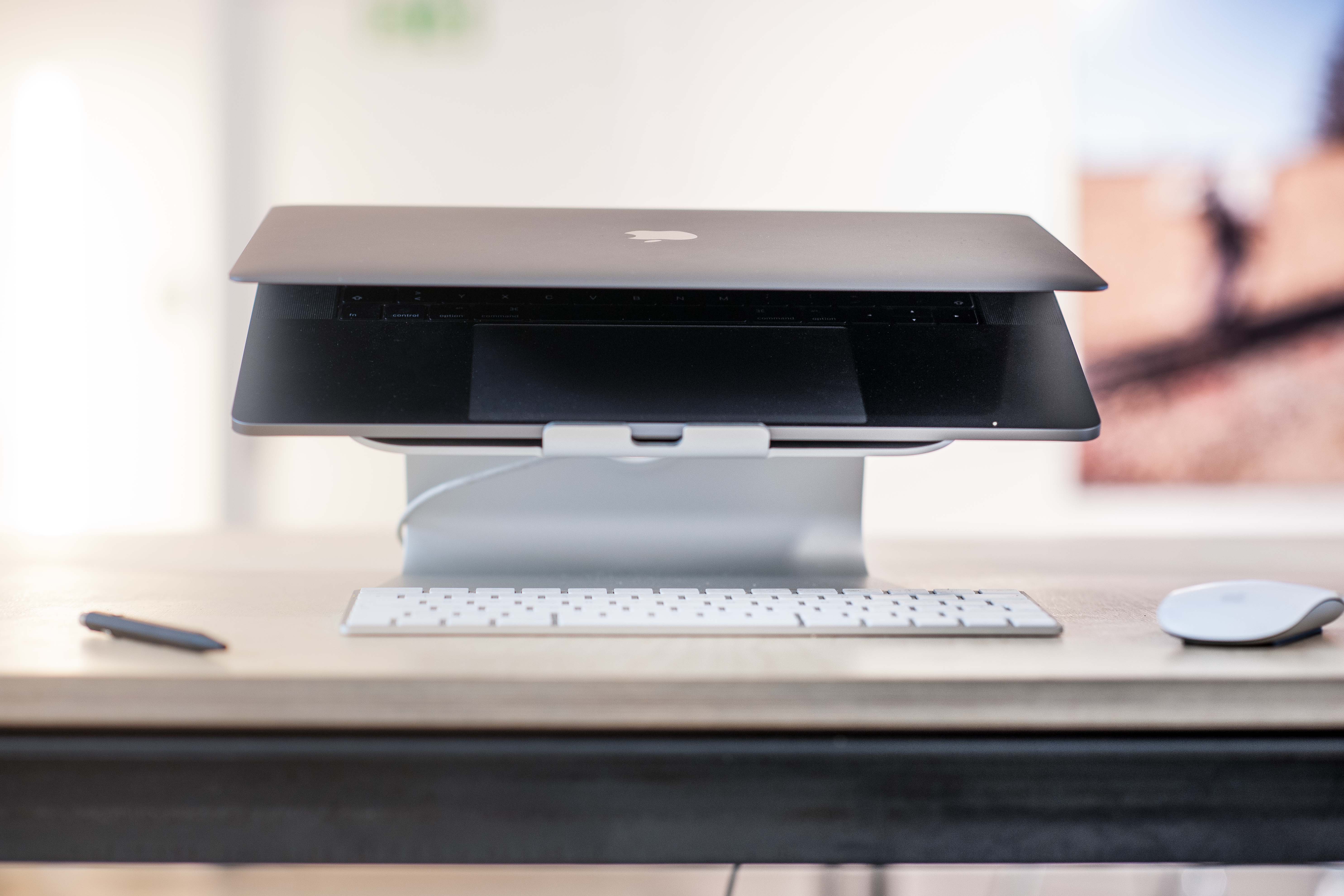
This MacBook is the source of everything new that you can discover on our website. Cail Pearce works mostly at his standing desk, though sometimes he moves to the long table in the center or to the sofa with his creative thoughts.
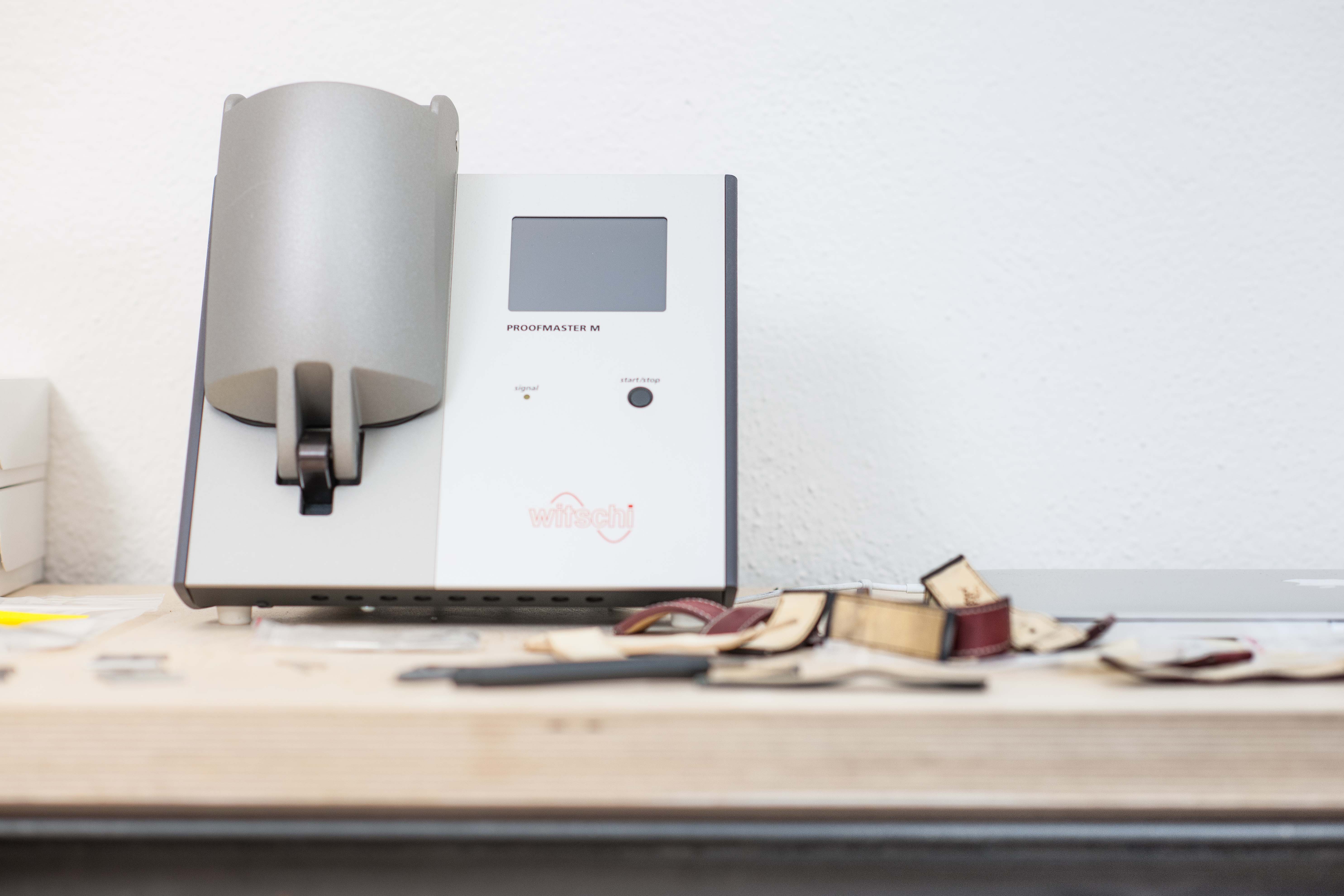
Each ochs und junior is tested for water tightness down to 100m. This is the test apparatus by Witschi in our workrooms. Could the straps made of Ecopell leather be orchestrated thus for the photo? I don’t know, but normally, there is order here.
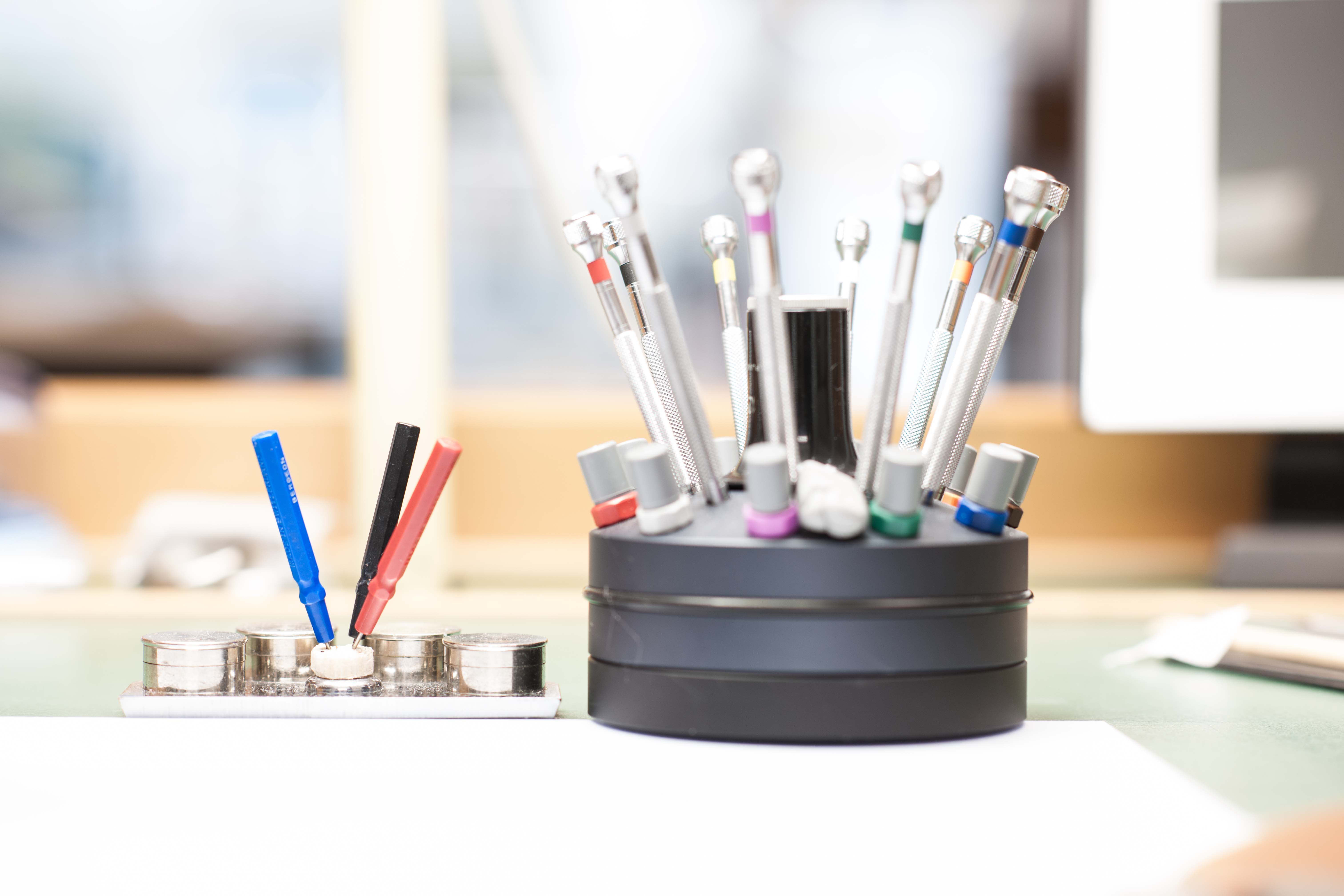
A fixed turnover block containing every relevant screwdriver as well as sharp blades. Our watchmakers are always intolerant when it comes to borrowing their tools. This place is out of bounds for everyone who is not assembling watches. Of course, you can do exactly that and assemble your own perpetual calendar at ochs und junior – with these precise screwdrivers. On the left are the tools to grease the relevant spots.
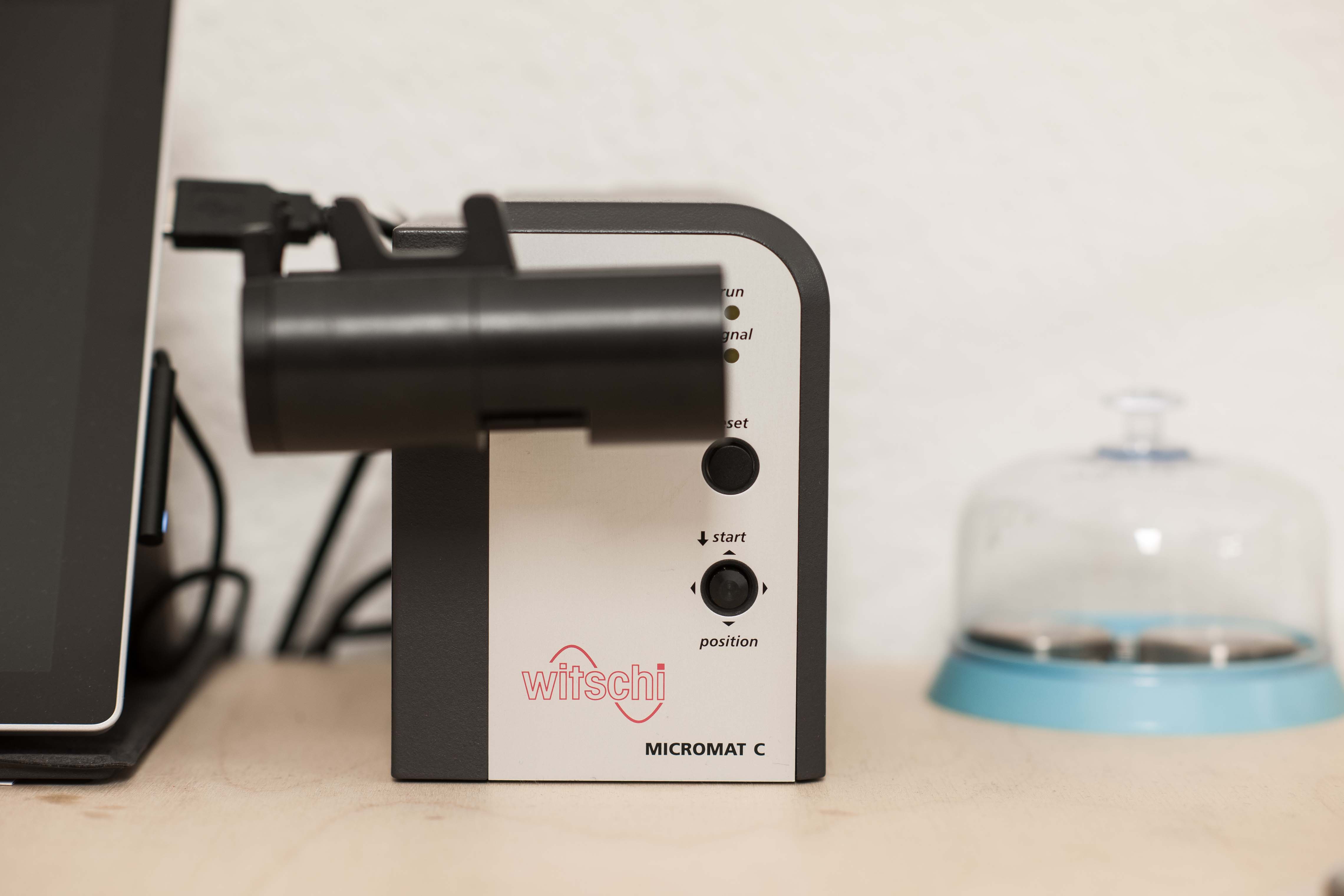
A perpetual calendar, an annual calendar, a moon phase – Ludwig Oechslin’s developments are without comparison in today’s watch industry. We offer a lifetime warranty on all parts that we have developed and manufactured ourselves.
An important testing apparatus for analyzing the switching phases of interlocking gears and discovering the precise location of any irregularities is this Micromat C by Witschi. It allows us to measure switching phases over the course of several hours – for example: the gears of the perpetual calendar at the end of February (for 3 hours in a leap year, and for 4 hours in a common year) – and to recognize a possible decrease in amplitude in the graphical readouts on the screen. Such a decrease can indicate that an increased effort is required during the switching phase and that therefore, a part has to be reworked by hand.
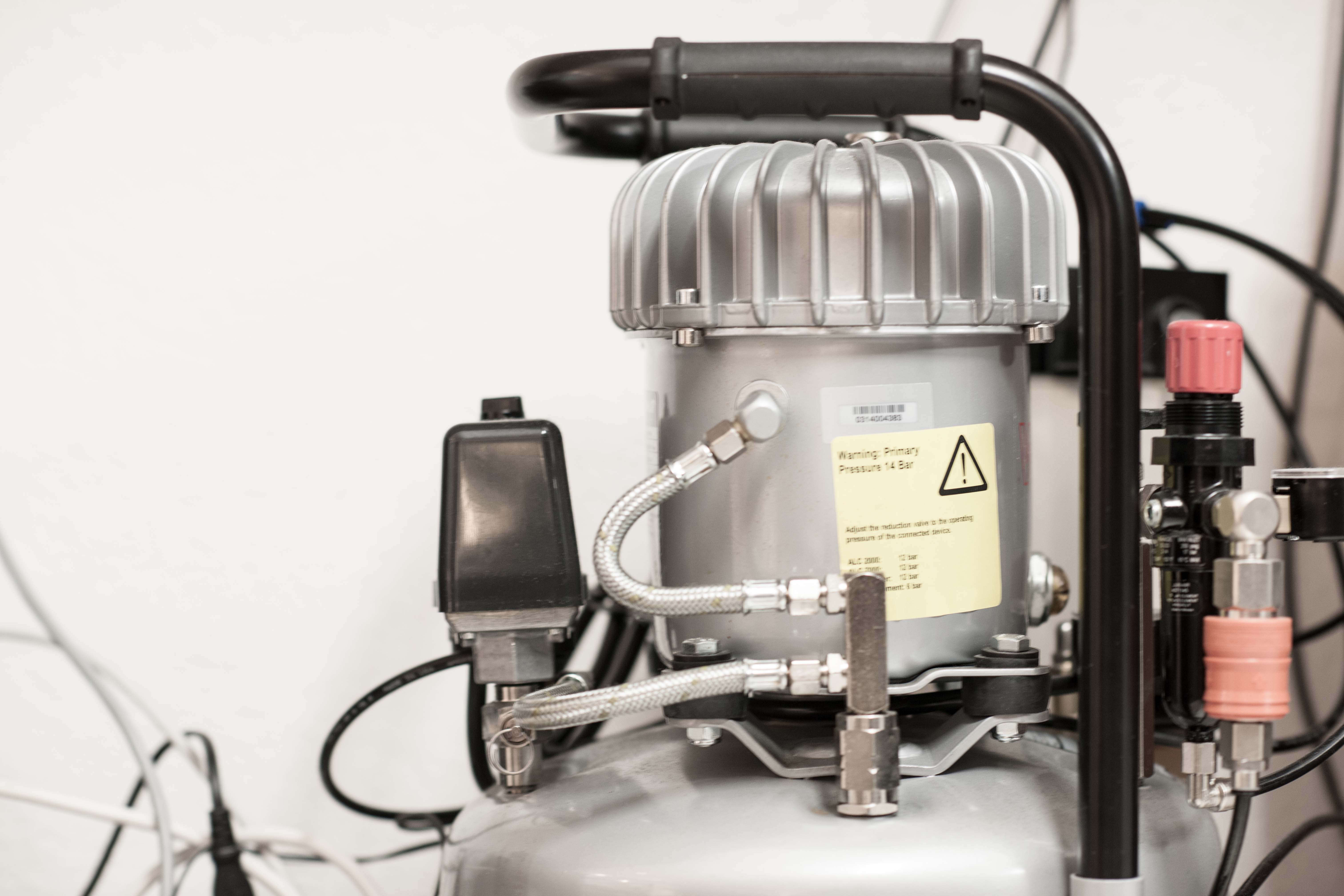
This is under pressure, a lot of pressure. This compressor is the source of occasional short bursts of noise. It is used to blow away tiny particles of dust, it powers our micro-vacuum, and it also supplies the pressure for our water-resistance tester.
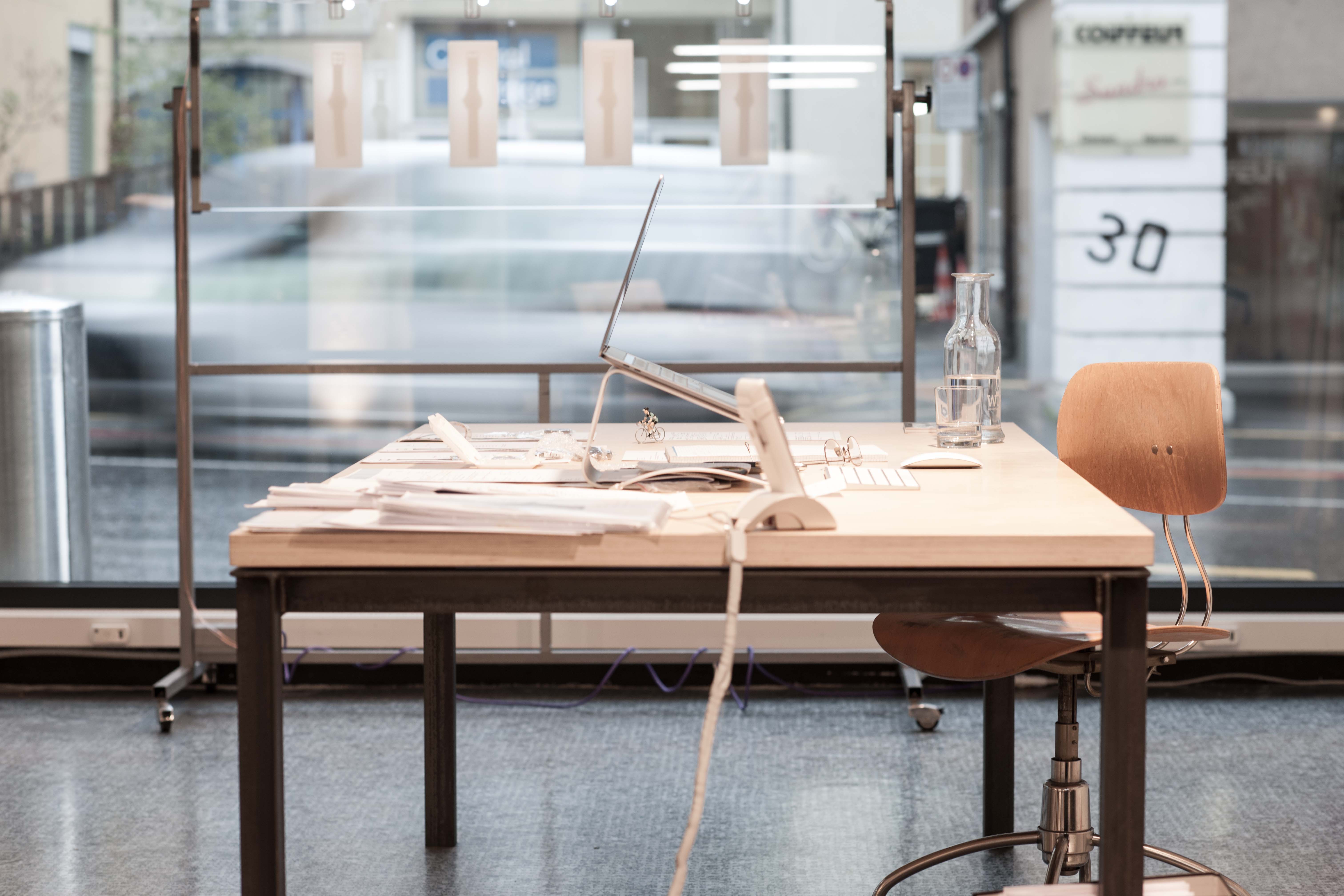
Right beside the window which faces Zürichstrasse. Sitting at this desk, I am directly connected to clients from all over the world and to life outside our workplace. Zürichstrasse is one of the main access roads to Lucerne’s inner city. It is the home of ad agencies and architecture firms. It is an urban, inspiring, and very eclectic place.
The street seethes with a lively mix of stores, some of which are constantly changing and some of which have been the same for decades – from a shoemaker to a dry cleaner to a kiosk. Adding to that are the people who live here and those that only pass the street on their way to somewhere else. We are here because this locality is unique in Lucerne and it’s a place that can easily be reached by public transport as well as by car.
Someone has moved my MacBook to this somewhat “unnatural” position before taking the photo. Apart from that, the picture shows my reality. There are, perhaps, a few more documents on my desk than usual. On the right, at the front of the table, are watch parts in a white plastic packaging that have just arrived from Cador.
Each delivery crosses my desk. Whether it is one that has just been received by us, or is one getting ready to be shipped out worldwide via FedEx. Each day, I drink at least 2 liters of water out of these carafes – our water is always perfectly cool, even in midsummer, so we think it must come from Mount Pilatus. The tiny cyclist on the desk is a discreet clue to my favorite hobby, and since 2017, I’ve needed glasses in order to read and work on my MacBook. The vintage swivel chair helps keep me in an upright position when sitting, by the way…
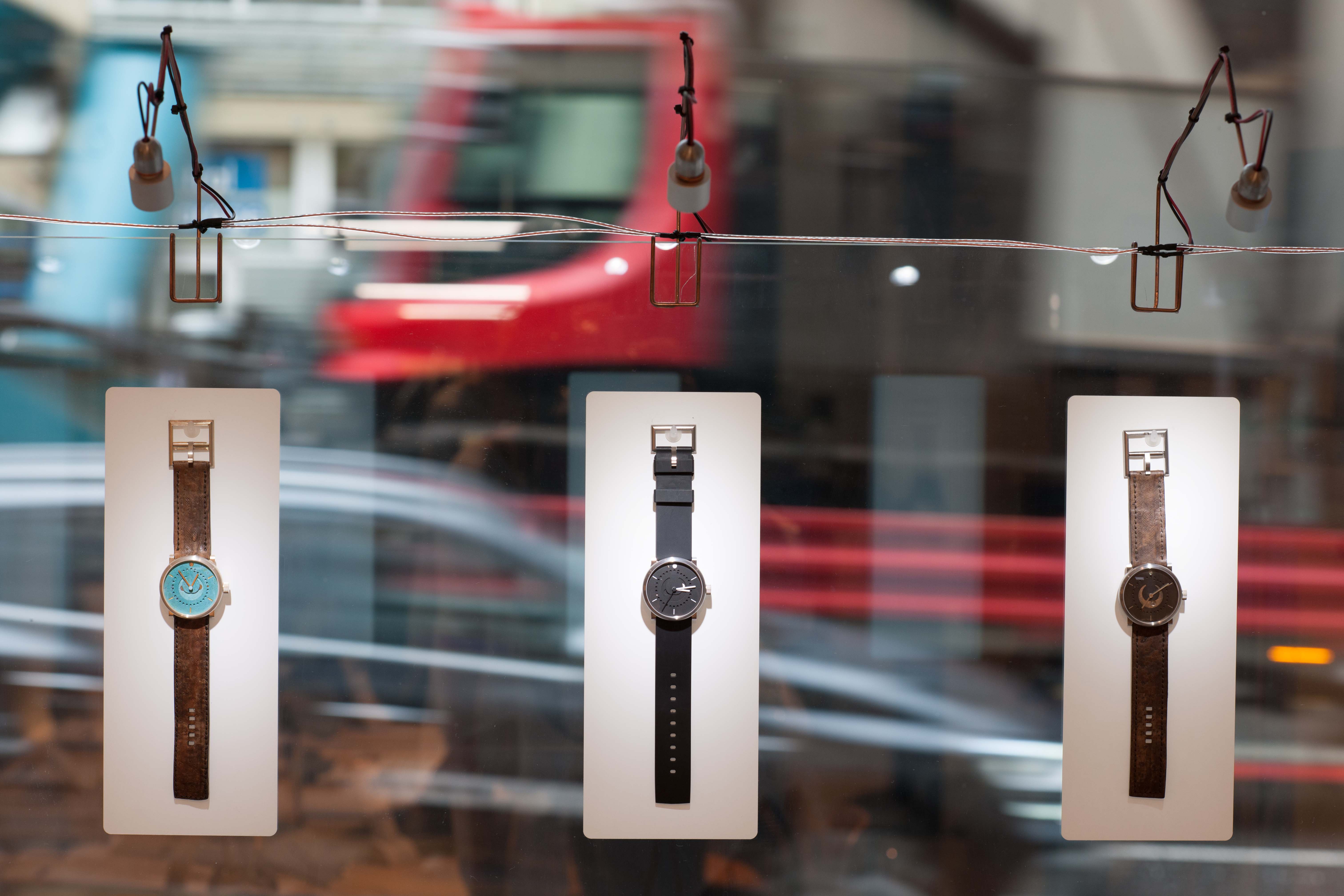
Passers-by of our workrooms at Zürichstrasse can see four of our watches. They are hanging from plastic hooks with white film as background. This type of display is diametrically opposed to the themed and labelled displays that are usual among watch retailers. There can hardly be a more simple and plain way of showing our watches. And even after six years, we still like this type of display.
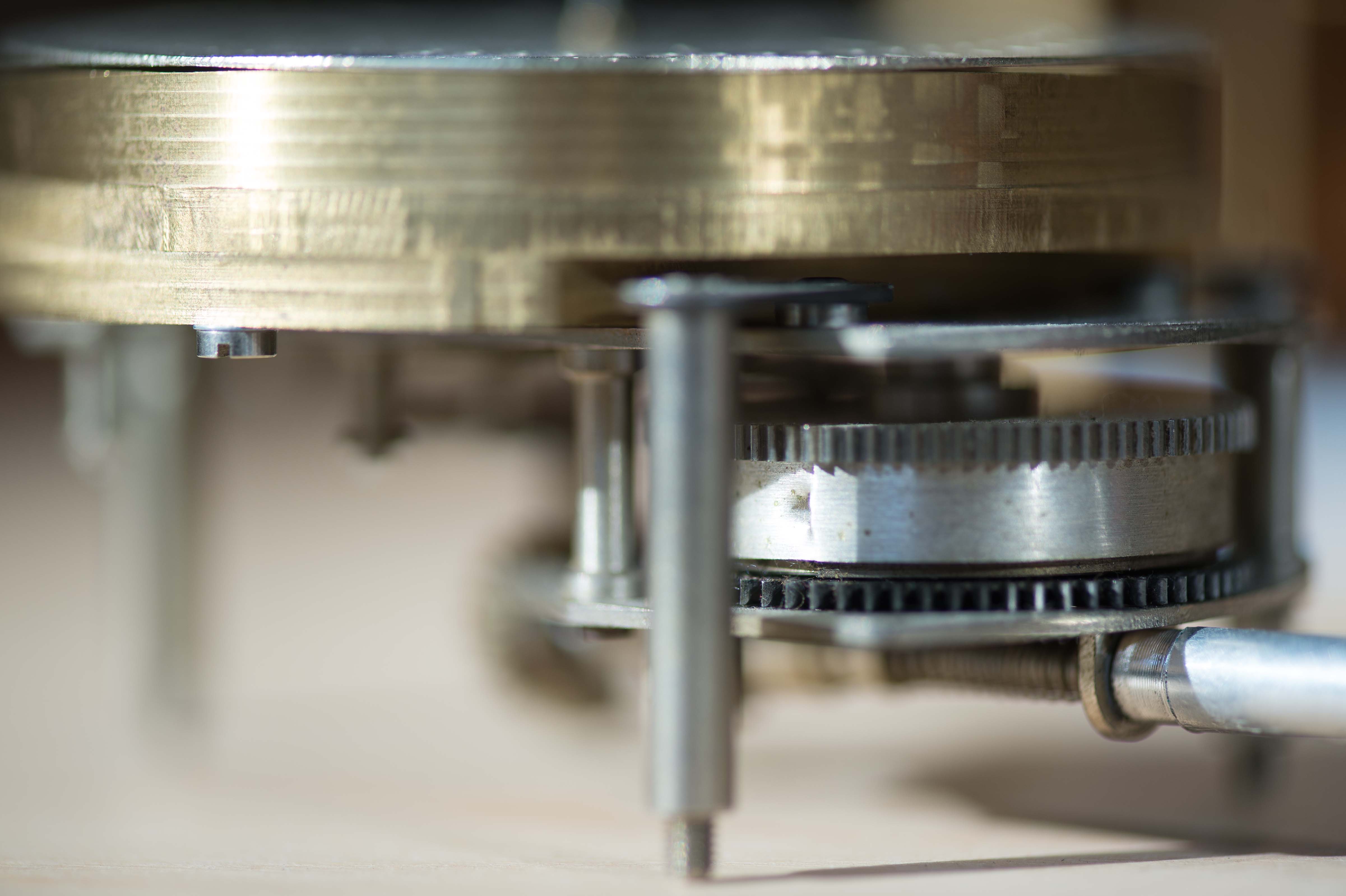
This watch movement of a mechanical alarm clock powers a 2:1 model of a prototype for a perpetual calendar. 40 years ago, Ludwig Oechslin built his first perpetual calendar and has since perfected his construction using the results of his experiences. This prototype – you can come see it at our workshop – has led, by a detour, to the ultimate reduction of this function. And it has thus led to the perpetual calendar you’ll find on our website or test in our workshop at Zürichstrasse 49 in Lucerne.

Understanding light and lighting the watches perfectly: Cail puts a lot of analytical effort into our product photography and is making progress towards achieving the perfect watch picture – although of course, there never will be a perfect watch picture. The watches by ochs und junior will always look more beautiful in real life than on even the best photo. So if you have ordered your personal watch and have not yet held one in your hand, you have something to look forward to.
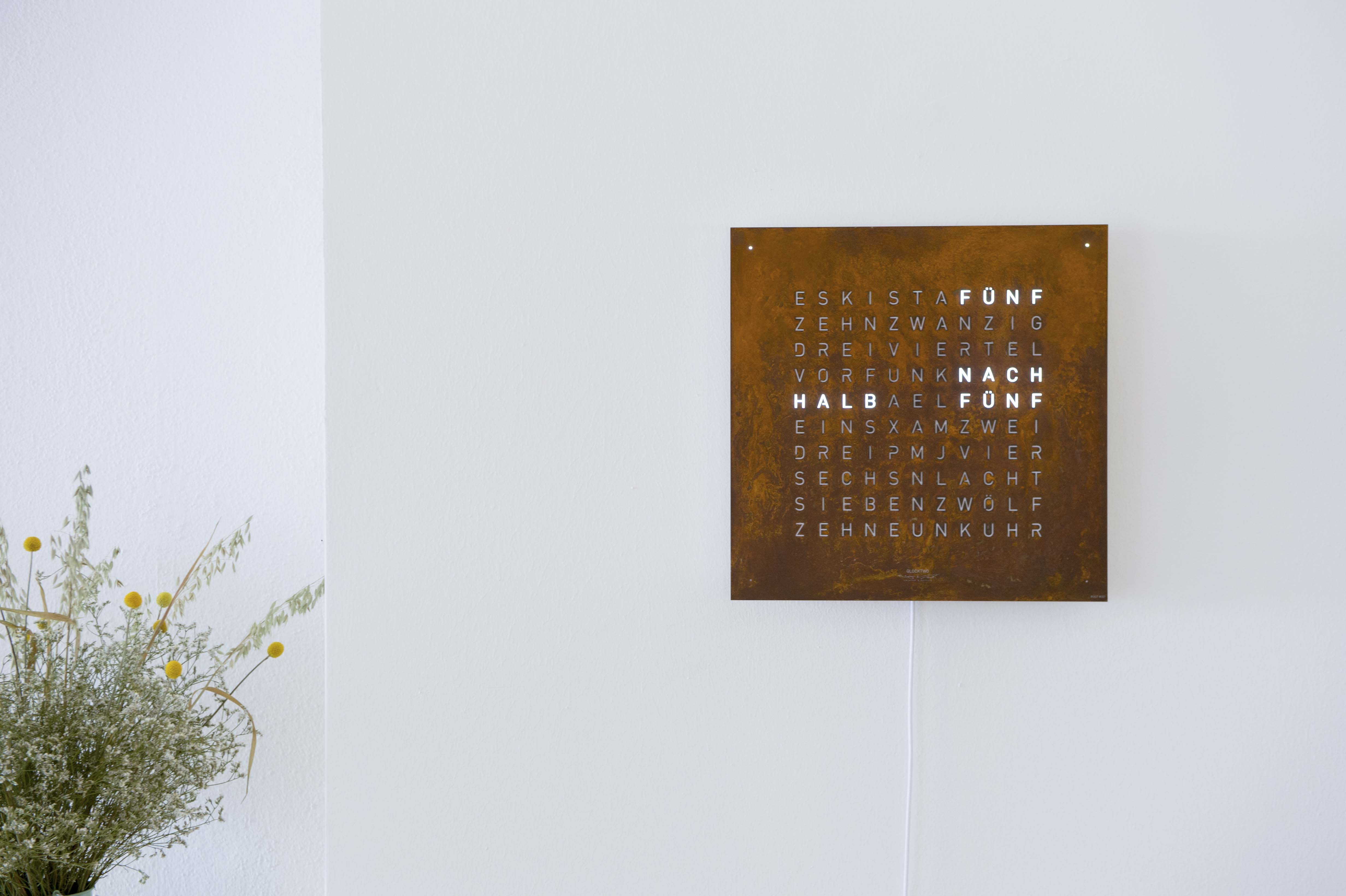
Hans Erb, a creative entrepreneur in the watch industry and the importer of the QLOCKTWO for Switzerland, has given this wonderful piece to us as a present in 2012. Ever since, we can occasionally adorn ourselves with borrowed plumes and sell the QLOCKTWO in our store.
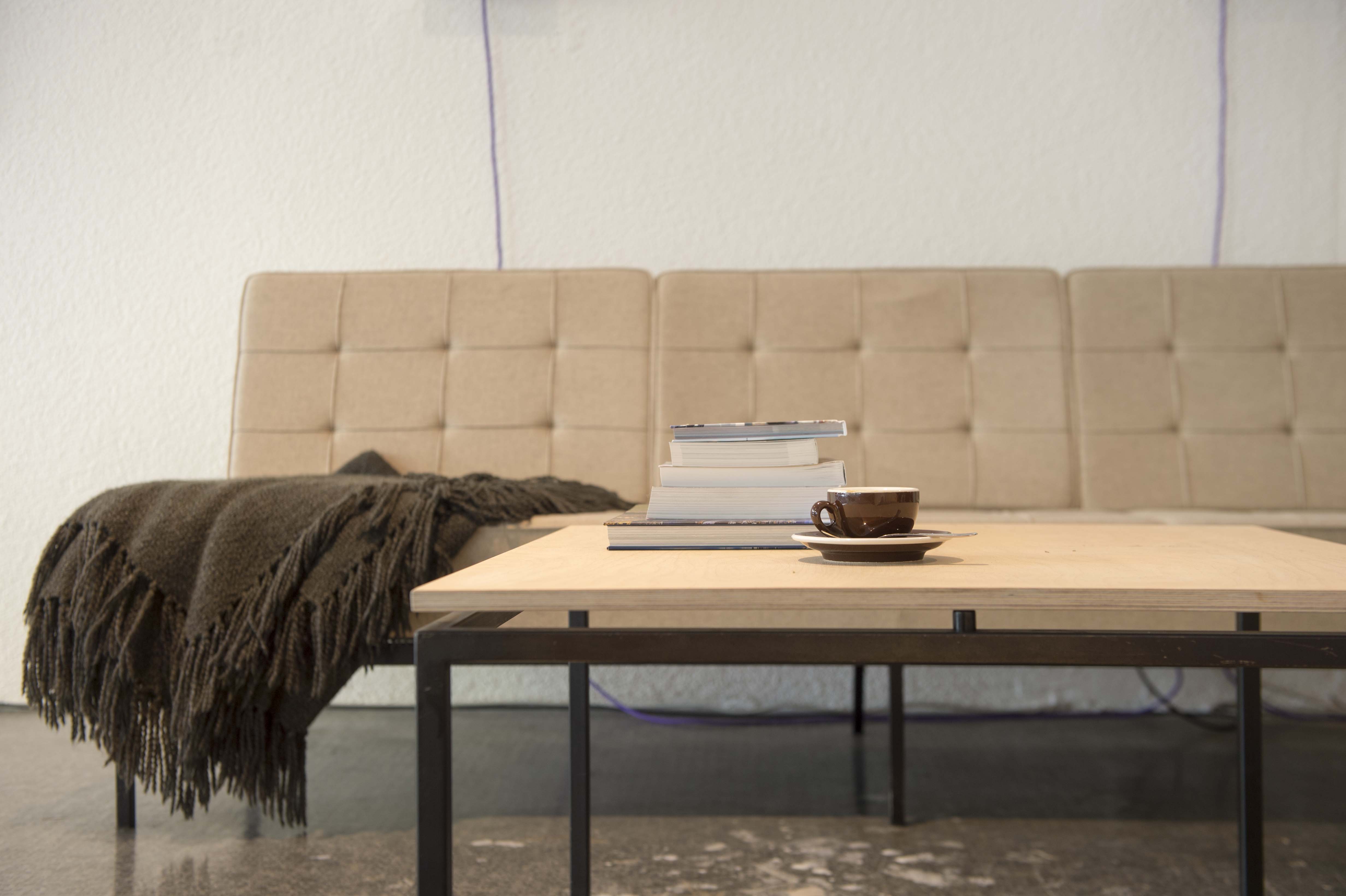
A 1959 piece by Florence Knoll, upholstered in fine fabric by Fischbach. In all likelihood, this lounge suite is the reason why so many people think that we are an interior design boutique – and not few of them want to buy it. The espresso cups are made of a thick, robust porcelain – and painted in an impossibly ugly color. We love them!
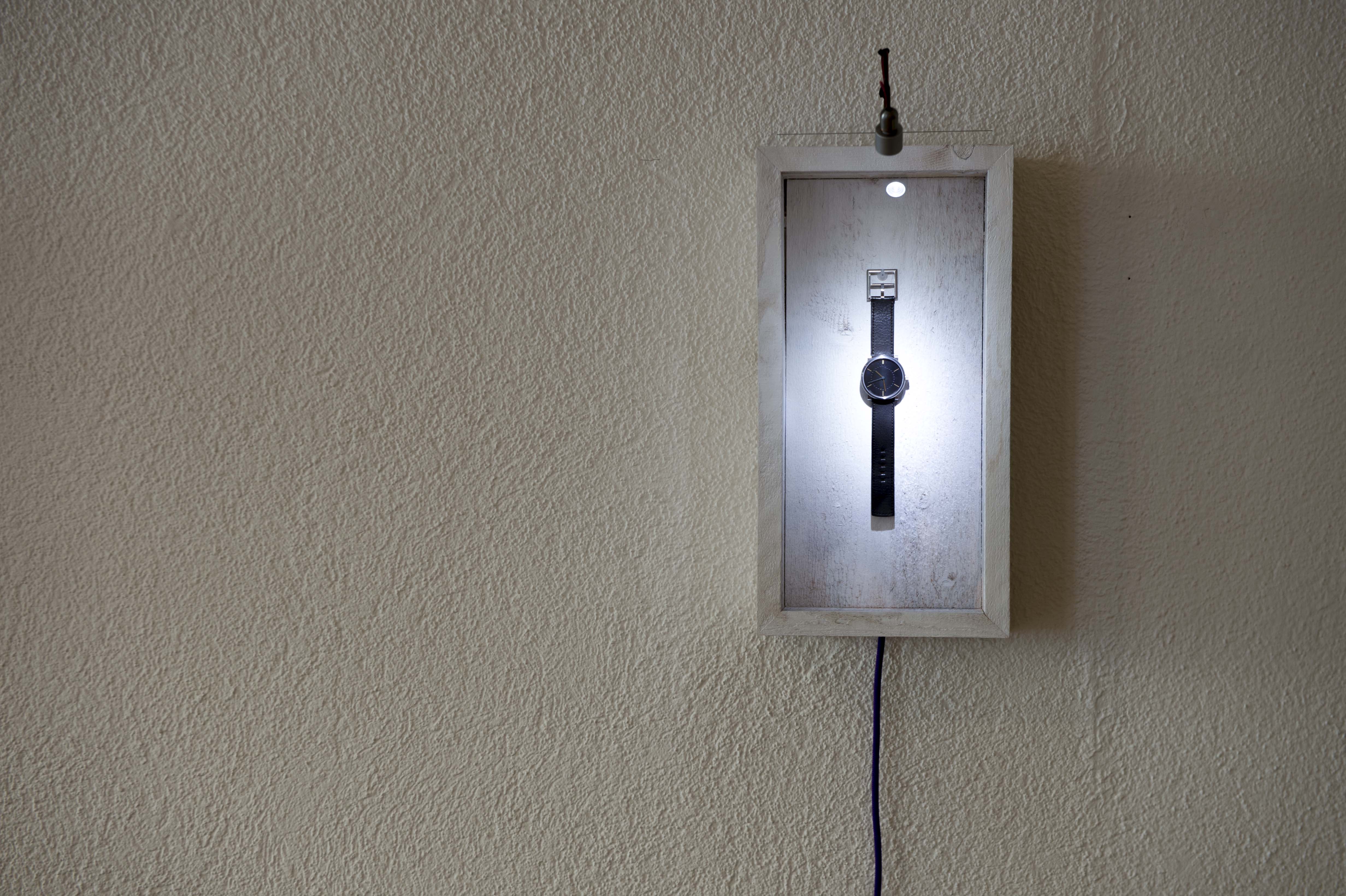
A glass case with several watches was always out of the question for us. We wanted something simple, elegant, and without writing. The untreated wood is painted white. If the little lamp containing a diode – as of yet, we have not had to replace a single one and we’ve been using them every day for the past six years – is turned to the side, the glass can be pulled up. That is how we take the watches out. Since the international experts for robberies of watch boutiques are not interested in ochs und junior and would hardly read our website – or so we hope –, we are sharing this little piece of indiscreet information with you.
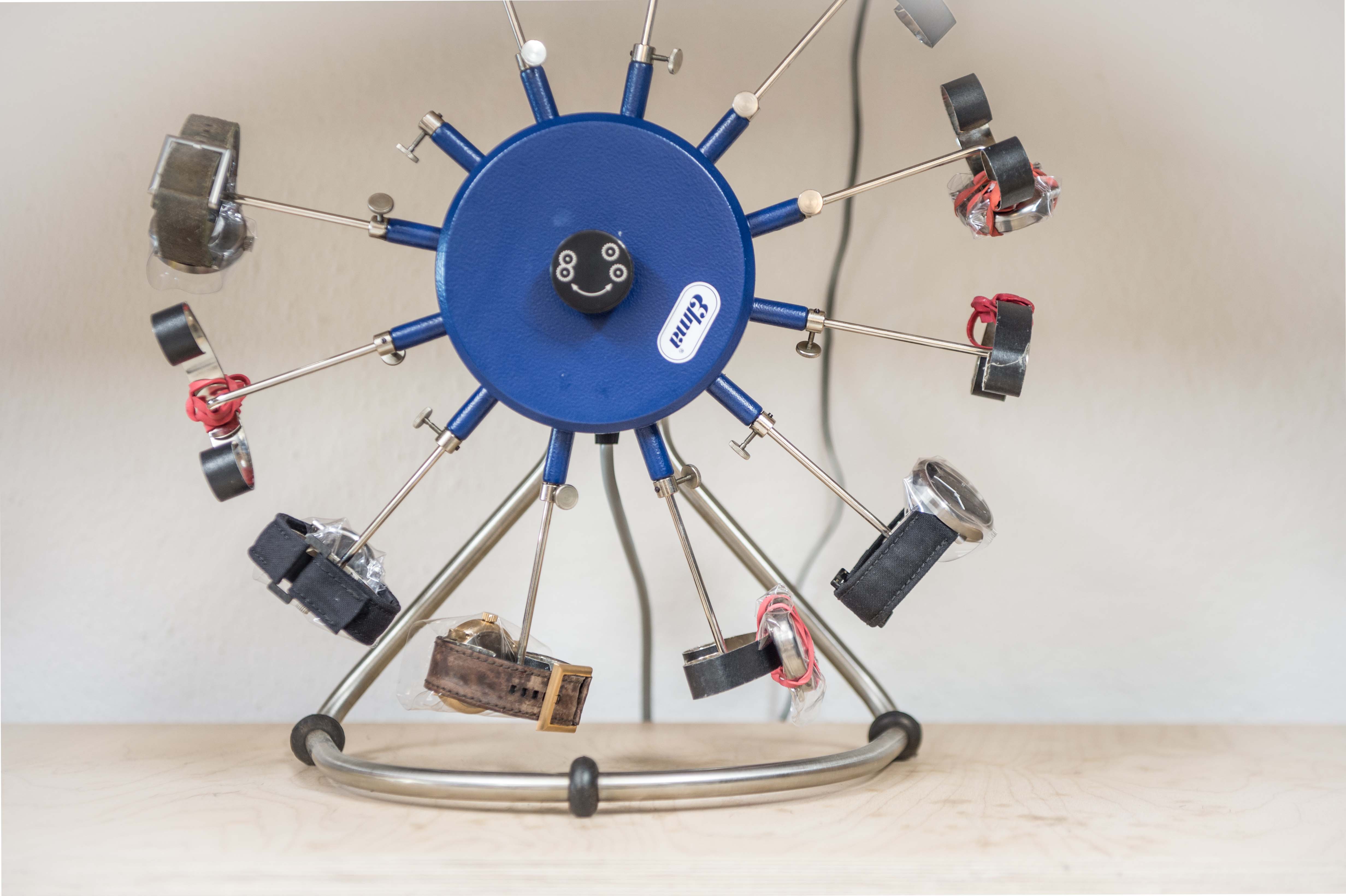
On this watch winder, you can discover, among other watches, an annual calendar LIGHT and a perpetual calendar in a bronze case. This is where part of the careful test phase that follows every procedure takes place.
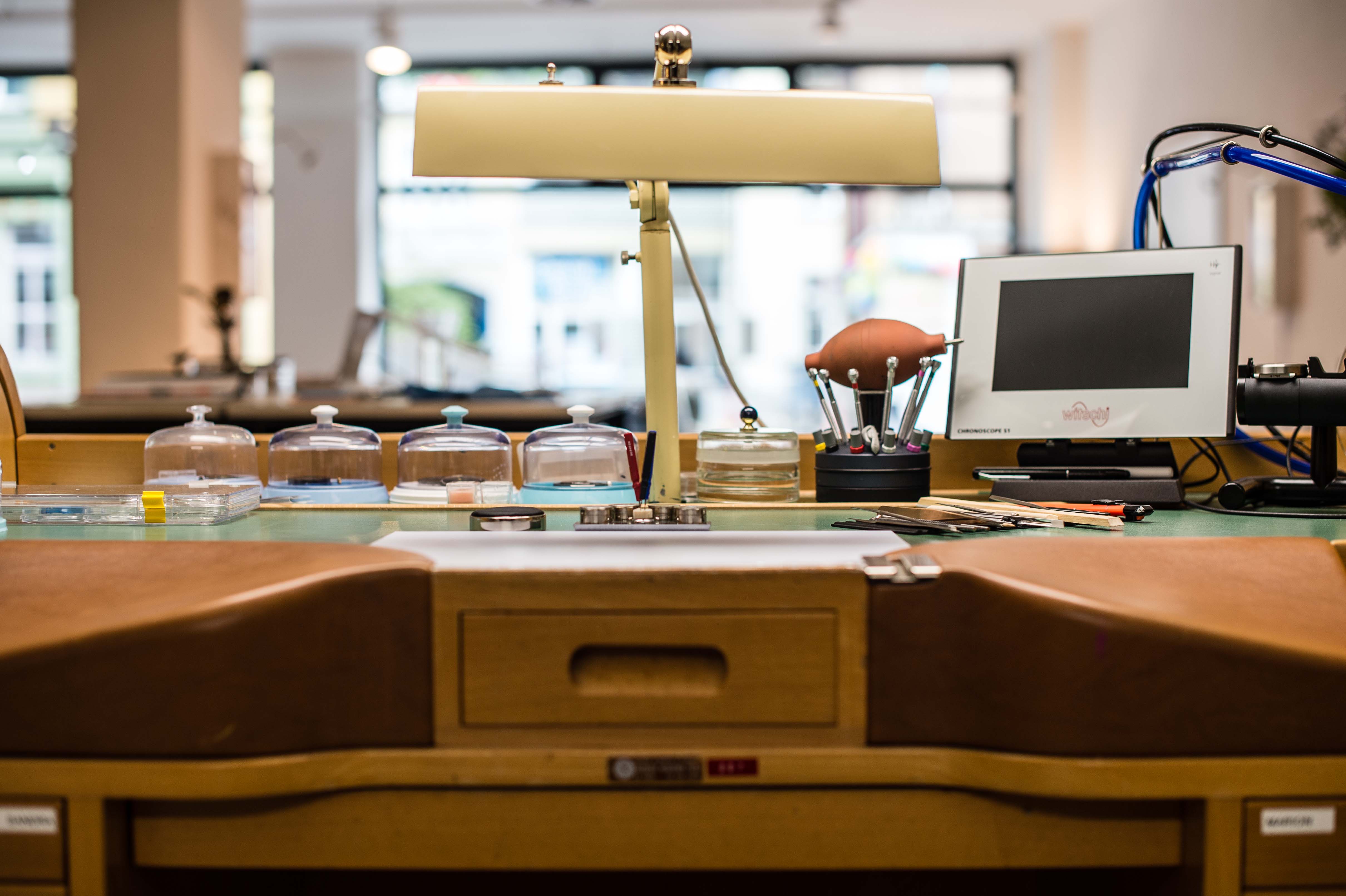
This is the view greeting our watchmaker when he comes to work in the morning and starts assembling watches. On the right, you can see a Witschi apparatus used to regulate the watches, then there are the already mentioned screwdrivers, a glass with rubbing alcohol, and little bell jars covering current projects. This desk used to belong to the curator of the watch museum in Le Locle, and thus comes with a bit of history, too.
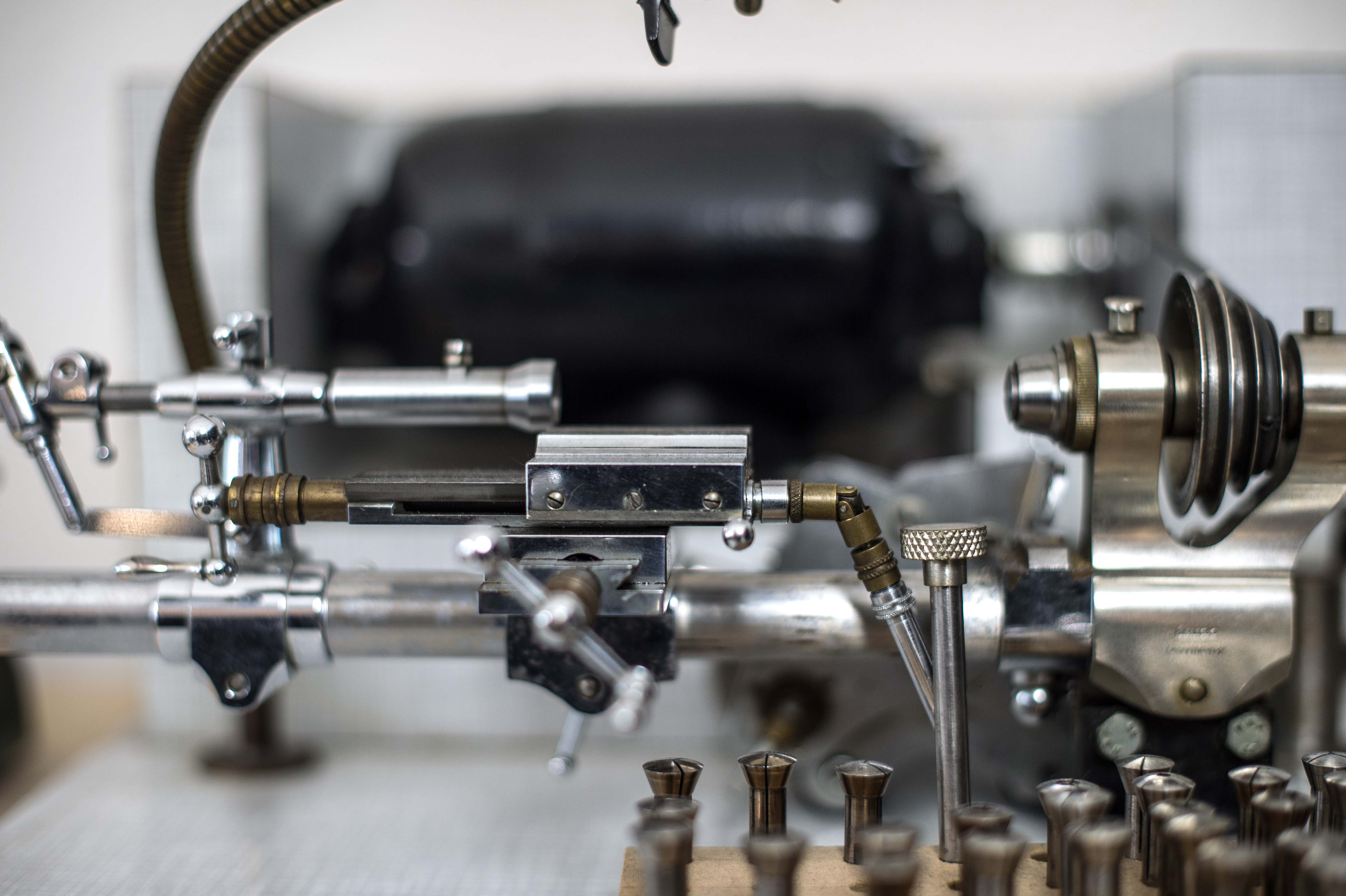
I, too, have on occasion laughed about this tiny turning lathe. It’s so small it looks a bit like it might belong in a doll house – or perhaps it looks like a toy tool in a model scene. However, it is very useful to quickly execute smaller adjustments and chamfers. A simple, but functional tool so there is no reason not to take it seriously…
For those who looked closely at the first photo in this post: we plan to take a new photo with our watchmaker Kevin Hoffmann soon!